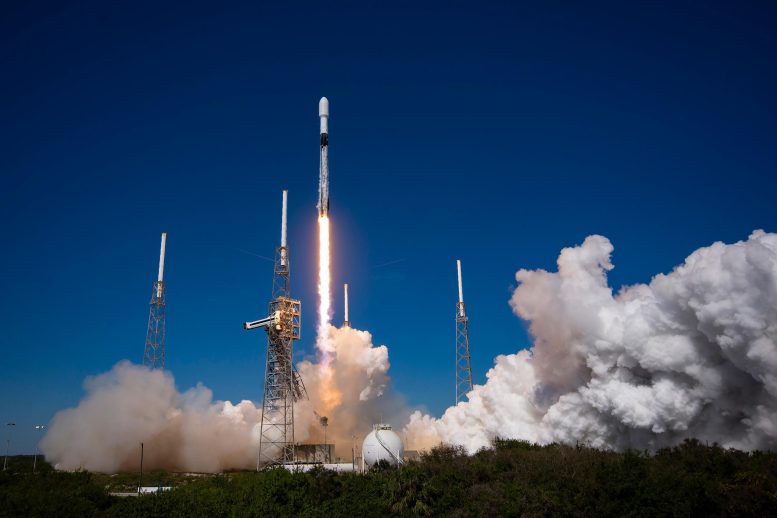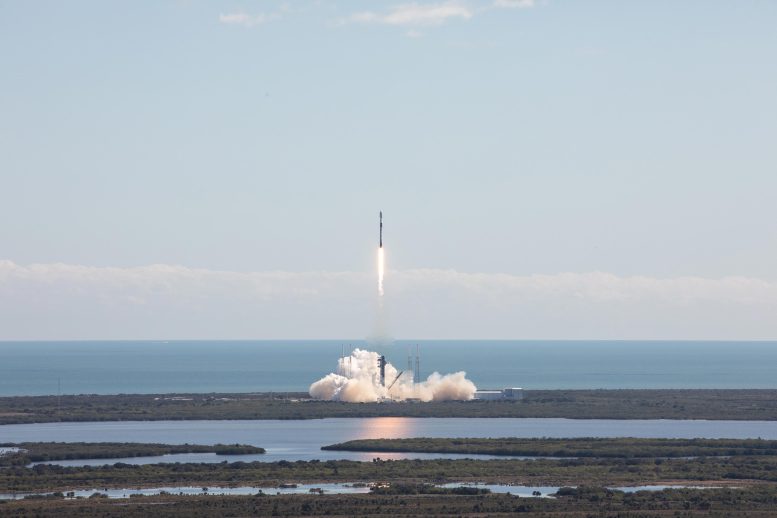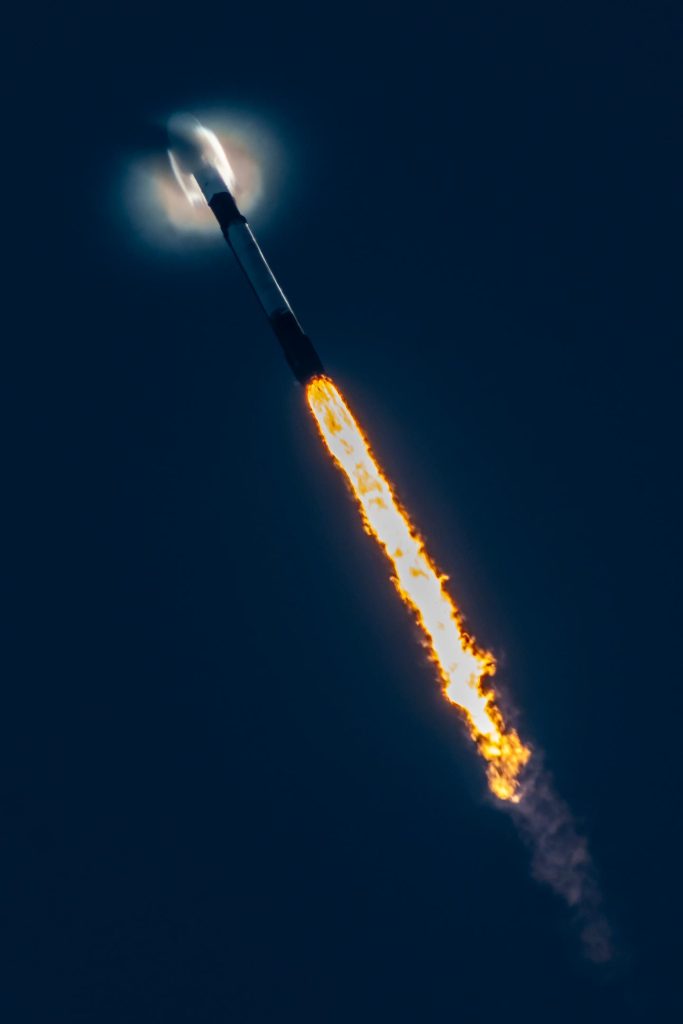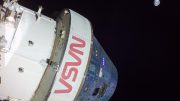
Northrop Grumman’s Cygnus spacecraft, loaded with more than 8,200 pounds of supplies, launched to the ISS on a SpaceX Falcon 9 rocket, marking the 20th resupply mission by Northrop Grumman for NASA. Credit: SpaceX
A fresh supply of more than 8,200 pounds of scientific investigations and cargo is on its way to the International Space Station on a Northrop Grumman Cygnus resupply spacecraft after launching on a SpaceX Falcon 9 rocket at 12:07 p.m. EST Tuesday from Space Launch Complex 40 at Cape Canaveral Space Force Station in Florida.
About 15 minutes after launch, Cygnus reached its preliminary orbit. About two hours after launch, the spacecraft successfully deployed its two solar arrays.

A successful liftoff from Space Launch Complex 40 at Cape Canaveral Space Force Station in Florida as Northrop Grumman’s Cygnus spacecraft, atop a SpaceX Falcon 9 rocket, heads to the International Space Station for the 20th Northrop Grumman resupply mission on Tuesday, January 30, 2024. The spacecraft is expected to reach the space station on Thursday, February 1, 2024, bringing 8,200 pounds of science investigations, supplies, and equipment for the international crew. Credit: Kim Shiflett
Cygnus is scheduled to arrive at the space station around 4:15 a.m. Thursday, February 1.
NASA+, NASA Television, the NASA app, and agency’s website will provide live coverage of the spacecraft’s approach and arrival beginning at 2:45 a.m.
NASA astronaut Jasmin Moghbeli will capture Cygnus using the station’s Canadarm2 robotic arm, and NASA astronaut Loral O’Hara will be acting as a backup. After capture, the spacecraft will be installed on the Unity module’s Earth-facing port.
This is Northrop Grumman’s 20th contracted resupply mission for NASA.

Northrop Grumman’s Cygnus spacecraft, atop a SpaceX 9 Falcon rocket, soars from Space Launch Complex 40 at Cape Canaveral Space Force Station in Florida on Tuesday, January 30, 2024, for the 20th Northrop Grumman commercial resupply mission for NASA. The spacecraft will bring 8,200 pounds of science investigations, supplies, and equipment to the International Space Station including tests of a 3D metal printer, semiconductor manufacturing, and thermal protection systems. The Cygnus spacecraft is expected to reach the space station on Thursday, February 1, 2024, where it will remain until its expected departure in May. Credit: SpaceX
Northrop Grumman’s Cygnus spacecraft is an unmanned cargo spacecraft designed to transport supplies, equipment, and scientific experiments to the International Space Station (ISS). Developed as part of NASA’s Commercial Orbital Transportation Services (COTS) program, Cygnus plays a crucial role in maintaining the ISS’s operations and advancing space research.
The spacecraft consists of two primary components: the Service Module, which contains the spacecraft’s avionics, propulsion, and power systems, and the Pressurized Cargo Module, where the cargo is stored. Once Cygnus completes its mission and is unberthed from the ISS, it safely burns up upon re-entering the Earth’s atmosphere. This design makes Cygnus an efficient means of not only delivering supplies but also disposing of the station’s waste.
Over the years, Cygnus has been instrumental in numerous resupply missions, contributing significantly to the ongoing success and sustainability of the ISS and its missions.









This might seem curious but it’s, in actual fact, the truth. Most of these “supplies” aren’t what you think they are. Aside food and daily upkeep for the astro-people, there are some other utterly strange supplies delivered up into the ISS. Here are some;
(1)Classified documents containing top government secret.
The ISS is one of the most inaccessible places, hence the idea.
(2)Sex workers to gratify the sexual needs of the astropeople. They party all night. Sometimes, when I look up at the ISS I see disco lights, indicating a heavy party. Astropeople are the laziest. SMH